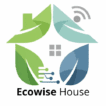The world of lighting is on the cusp of a revolution. Forget simply turning lights on and off. We’re entering an era where illumination adapts to our needs, enhances our well-being, and minimizes our environmental impact. This article will delve into the groundbreaking smart lighting technologies poised to reshape our homes and contribute to a more sustainable future in 2024 and beyond.
Li-Fi: Illuminating the Data Highway
While Wi-Fi has become ubiquitous for wireless internet, Li-Fi (Light Fidelity) emerges as a promising alternative. Li-Fi uses light waves, specifically visible light, to transmit data. Imagine your light bulbs not just providing illumination but also acting as high-speed internet access points. The implications are significant. Li-Fi offers several key advantages:
- Speed: Li-Fi boasts potentially much faster data transfer rates than Wi-Fi, reaching theoretical speeds of up to 224 Gbps.
- Security: Light cannot penetrate walls, making Li-Fi more secure against hacking attempts than Wi-Fi. Data transmission is confined to the illuminated space.
- Efficiency: Li-Fi can utilize existing LED lighting infrastructure, potentially reducing energy consumption compared to running separate Wi-Fi routers.
- Reduced Interference: Li-Fi doesn’t interfere with radio frequencies, making it ideal for environments where radio wave interference is a concern, such as hospitals or airplanes.
However, challenges remain. Li-Fi requires a direct line of sight between the light source and the receiver. Obstructions can interrupt the signal. Ambient light can also interfere with the data transmission. Despite these limitations, ongoing research and development are addressing these issues, paving the way for wider adoption of Li-Fi in smart homes and commercial spaces.
Human-Centric Lighting: Illumination for Well-being
Beyond data transmission, lighting is increasingly recognized for its impact on human health and well-being. Human-centric lighting (HCL) aims to mimic natural daylight patterns, adjusting the color temperature and intensity of light throughout the day to support our circadian rhythms. Here’s how it works:
- Circadian Rhythm Alignment: HCL systems often start with cooler, blue-enriched light in the morning to suppress melatonin production and promote alertness. Throughout the day, the color temperature gradually warms, transitioning to warmer, amber-toned light in the evening to prepare the body for sleep.
- Improved Sleep Quality: By regulating melatonin levels, HCL can improve sleep quality, leading to increased daytime energy and productivity.
- Enhanced Mood and Focus: Studies have shown that HCL can positively impact mood, cognitive function, and overall well-being. Properly designed lighting can create a more stimulating and focused environment.
- Personalization: Smart lighting systems allow users to customize lighting schedules and color temperatures to suit their individual needs and preferences. This personalization is crucial for maximizing the benefits of HCL.
The integration of HCL into smart home systems is becoming increasingly prevalent. Expect to see more lighting fixtures and controllers with pre-programmed HCL settings and the ability to integrate with wearable devices to further personalize the lighting experience.
AI-Powered Ambiance: Smart Lighting that Learns and Adapts
Artificial intelligence (AI) is taking smart lighting to the next level. AI-powered ambiance utilizes machine learning algorithms to analyze user behavior, environmental conditions, and other data points to create optimized lighting scenarios. Imagine your lights automatically adjusting to your activity, the time of day, and even your mood.
- Automated Scenes: AI can learn your daily routines and automatically create lighting scenes for different activities, such as reading, cooking, or watching TV.
- Predictive Lighting: AI can anticipate your needs and adjust the lighting accordingly. For example, the lights might brighten as you enter a room or dim as you prepare for bed.
- Energy Optimization: AI can analyze energy consumption patterns and identify opportunities to reduce energy waste. It can automatically dim or turn off lights in unoccupied rooms.
- Integration with Smart Home Ecosystems: AI-powered lighting systems can seamlessly integrate with other smart home devices, such as thermostats, security systems, and voice assistants, to create a truly connected and intelligent living environment.
As AI technology advances, expect to see more sophisticated smart lighting systems that can learn and adapt to your needs in real-time. These systems will not only enhance comfort and convenience but also contribute to significant energy savings.
Sustainability and the Future of Illumination
The smart lighting revolution is not just about convenience and personalization; it’s also about sustainability. Emerging lighting technologies are playing a crucial role in reducing energy consumption and minimizing our environmental impact. The key element in this equation is LED Technology:
- LED Efficiency: LED lights are significantly more energy-efficient than traditional incandescent bulbs, consuming up to 80% less energy.
- Long Lifespan: LEDs have a much longer lifespan than traditional bulbs, reducing the need for frequent replacements and minimizing waste.
- Smart Controls: Smart lighting systems enable granular control over lighting usage, allowing users to dim or turn off lights when they are not needed.
- Integration with Renewable Energy: Smart lighting systems can be integrated with renewable energy sources, such as solar panels, to further reduce their environmental impact.
Looking ahead, expect to see a greater emphasis on sustainable lighting solutions. This includes the development of more energy-efficient LEDs, the use of recycled materials in lighting fixtures, and the adoption of smart lighting technologies that optimize energy consumption. These advancements will drive the smart lighting industry toward a greener and more sustainable future. Moreover, technologies like Li-Fi, which can leverage existing LED infrastructure, will indirectly contribute to sustainable practices.
In conclusion, the future of illumination is bright, powered by innovations like Li-Fi’s data capabilities, human-centric lighting’s focus on well-being, and AI-powered ambiance’s adaptability. These technologies, coupled with the ongoing advancements in LED efficiency and smart controls, promise to transform our homes into more comfortable, convenient, and sustainable spaces. By embracing these advancements, we can unlock the full potential of light to enhance our lives and protect our planet.

